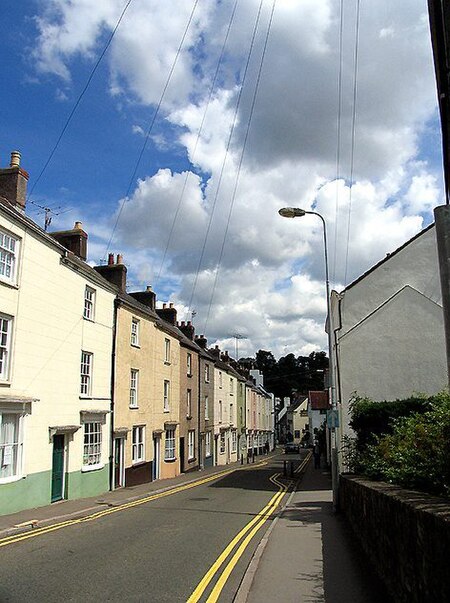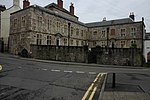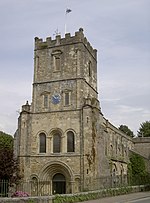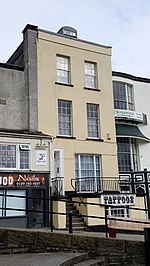Chepstow (Welsh: Cas-gwent) is a town and community in Monmouthshire, Wales, adjoining the border with Gloucestershire, England. It is located on the tidal River Wye, about 2 miles (3 km) above its confluence with the River Severn, and adjoining the western end of the Severn Bridge. It is the easternmost settlement in Wales, situated 16 miles (26 km) east of Newport, 28 miles (45 km) east-northeast of Cardiff, 18 miles (29 km) northwest of Bristol and 110 miles (180 km) west of London.
Chepstow Castle, situated on a clifftop above the Wye and its bridge, is often cited as the oldest surviving stone castle in Britain. The castle was established by William FitzOsbern immediately after the Norman conquest, and was extended in later centuries before becoming ruined after the Civil War. A Benedictine priory was also established within the walled town, which was the centre of the Marcher lordship of Striguil. The port of Chepstow became noted in the Middle Ages for its imports of wine, and also became a major centre for the export of timber and bark, from nearby woodland in the Wye Valley and Forest of Dean. In the late eighteenth century the town was a focus of early tourism as part of the "Wye Tour", and the tourist industry remains important. Other important industries included shipbuilding – one of the First World War National Shipyards was established in the town – and heavy engineering, including the prefabrication of bridges and wind turbine towers. Chepstow is also well known for its racecourse, which has hosted the Welsh National each year since 1949.
The town had a population of 10,821 according to the 2001 census, increasing to 12,350 at the 2011 census. It is served by the M48 motorway, and its accessibility to the cities of Bristol, Newport and Cardiff means it has a large number of commuters. It is administered as part of Monmouthshire County Council, and is within the Monmouth UK parliamentary constituency and Senedd constituency. Chepstow is on the western bank of the Wye, while adjoining villages on the eastern bank of the river, Tutshill and Sedbury, are in England. The population of the built-up area including these villages was 16,169 in 2011.











